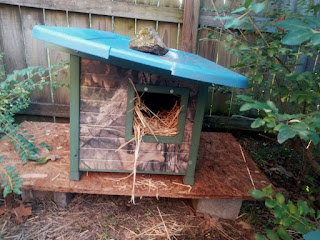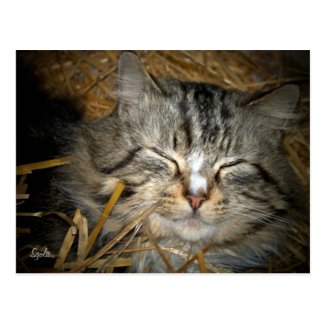Fill
your outdoor shelters for feral or stray cats with dried wheat straw,
not hay and not a blend of straw that feels damp to the touch. Hay
and a blended straw will hold moisture and will make the cat feel
colder. Also the hay and blended straw will get moldy. So when you
shop make sure you buy straw that is made from 100% dried wheat.
Normally
we do not have a problem with buying wheat straw but this year the
shops in town, Lowes, Walmart, and Home Depot are all selling a blend
of straw, wheat, rye, and corn. This straw does not feel right, it
feels damp to the touch so it would not be good for an outdoor cat
bedding.
 |
| Cathouse in the barn filled with wheat straw |
 |
One of our outdoor cat houses..
We added mylar insulation and wheat straw bedding |
The best bedding for outdoor cats or dog houses is wheat straw. The straw that is made from leftover wheat stalks will repel moisture and this
is why wheat is ideal for keeping outdoor cats or dogs warm and comfy
in their cat houses. Wheat straw is the best form of insulation, but
I do recommend that you change out the straw weekly to remove any
straw that is marked (urine sprayed by the cat)
I
recommend that when you set up your winter cat houses that you put
down dome cedar chips (mulch) or dried pine needles on the bottom of
the bed then a hefty layer of straw on the top, Do not add blankets
as they will retain moisture and make the cat feel colder.
 |
| A wooden cat house filled with wheat straw, you can see the cat made a bed from body imprint in the straw. The top, walls, and floor of this house have Mylar reflective board which will keep the cat warmer in winter. |
Update 12/30/2023
Many online
retailers are promoting and selling barley straw for feral cat house bedding.
Barley usually costs less money than wheat straw. I know in my
city barley straw is not available whereas I can easily find wheat
straw.
Know that I
prefer wheat straw because it makes a warm and comfortable bed for feral
cat houses. The straw is easy to handle and if it gets wet it drains
well.
I asked Bing what straw was best for feral cats
.














